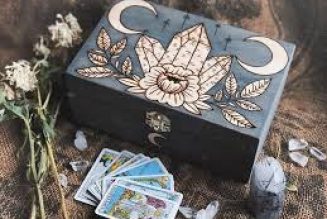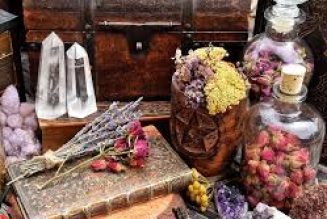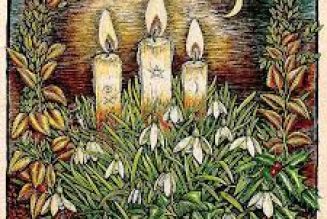Many herbs will grow well in pots on sunny windowsills, in window boxes, hanging baskets and in tubs or barrels in a sun room or on a balcony.
There should even be enough space on one large, south-facing windowsill to grow a selection of the basic flavoring herbs or a row of scented herbs that can be used for making tisanes.
If you have a sunroom or baloney, then 4 tubs planted with mixed annuals and perennials and a good proportion of evergreen herbs for winter picking could provide most of the fresh herbs needed by a small household, as well as being decorative and sweetly scented.
Light and Temperature
The first necessity is light.
Few herbs suitable for indoor growing will thrive in the shade. Most need sunlight for at least half the day, so set them in a south-facing window, if possible, otherwise one facing east or west.
It is possible to grow herbs in a shady room under special fluorescent tubes, which should be set about six inches above the top of the plant.
Temperature is important. It is useless to attempt to grow herbs directly above a radiator or stove in an airless kitchen that is often steamy and full of fumes.
Ideally, there should be warmth during the day, lower temperatures at night and some humidity. In a centrally heated house, humidity may be lacking so keep a bowl filled with water above the radiator or near the herbs.
A direct draft may harm the plants though fresh air is necessary.
Clay and Plastic Pots
Plastic pots are often used today, being cheaper, lighter, and less likely to break than clay.
But there are some advantages in using an unglazed clay pot, the most important being that excess water will evaporate through the clay walls so the roots are not likely to become waterlogged.
Drowning by over-watering is the most common fate of indoor herbs.
Another advantage is that the moisture content in the soil can be discovered by tapping a clay container sharply; it will give a ringing sound if the soil is too dry and a dull thud if too wet.
Whether plastic or clay, the container should have an adequate drainage hole and be stood in a saucer or tray.
A layer of gravel in the tray will ensure that the pot never sits in stagnant water.
Boxes and Barrels
Wooden boxes or barrels make good containers if you have the space.
Boxes should be at least 10 inches deep. Saw barrels in half and use them as tubs, or cut several holes about 2 inches across in their sides and grow a herb from each hole.
If you use a large barrel in this way, put a narrow tube of wire netting down the center from top to bottom, before filling it with earth.
By watering down the tube, the moisture will spread evenly through the soil; with no tube, the lower plants may suffer from drought.
Do not creosote the insides of wooden containers to sterilize them as the fumes may damage the plants, instead make a small fire of newspaper inside the container, just sufficient to char and
sterilize the surface of the wood.
Hanging Baskets
To make the best use of all available space and light, plant a hanging basket with herbs, the upright species in the center and trailing mints and thymes, nasturtiums or ground ivy round the edge.
Special clay bowls or wire baskets can be bought for this purpose or even an old kitchen colander will do.
To contain moisture, line the wire basket thickly with sphagnum moss or hay, or with a plastic sheet, before filling it with earth.
A large, unglazed, terra-cotta bowl with 6 or 7 2-inch holes bored in it will make an ideal hanging onion pot, if you can buy one or have one made.
Fill it with earth, plant chives in the top and press the bulbs of Welsh onion into the holes.
You will be able to cut the hanging green shoots throughout the winter.
Soil, Water, Food, and Care
Put a layer of broken crocks or stones in the bottom of large containers before filling them with soil and sprinkle a few spoonfuls of granulated charcoal over them to prevent the soil from souring.
Then, fill with a standard potting compost bought from a shop or good, loamy, garden earth mixed with a little coarse sand.
Sterilize the garden earth for an hour in the oven if you wish, to kill insect eggs and weed seeds.
Be careful not to overwater, especially during the winter when plans are resting and should not be stimulated into unseasonal growth. It is best to water in the morning so that excess moisture can evaporate during the day and to use only tepid water.
During the summer, it may be necessary to syringe the leaves of broad- leafed herbs such as sweet basil with tepid water to prevent them from flagging.
The leaves of herbs in city window boxes will also need occasional syringing to prevent their pores from becoming clogged with grime and fumes.
Each spring, spread a little well-rotted compost over the earth in the herb container and water well.
If any other food is needed, use a herbal fertilizing tea.
Although the restricted light and space will prevent herbs from growing as large indoors as they would outside, they will need regular cropping or trimming to keep them compact and controlled.
Pinch out the center shoots to encourage bushy growth and cut off any runners.
Examine the drainage hole regularly and if root fibers are showing, transfer the plant to a larger pot.






